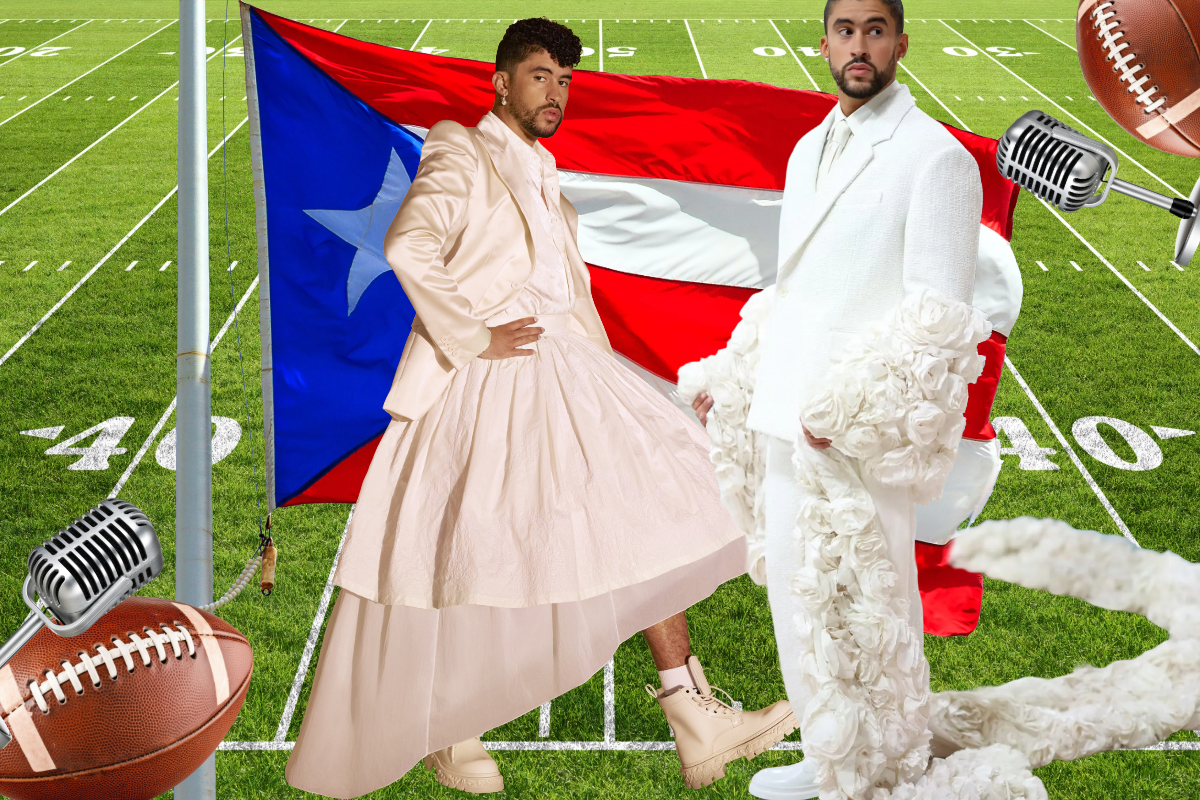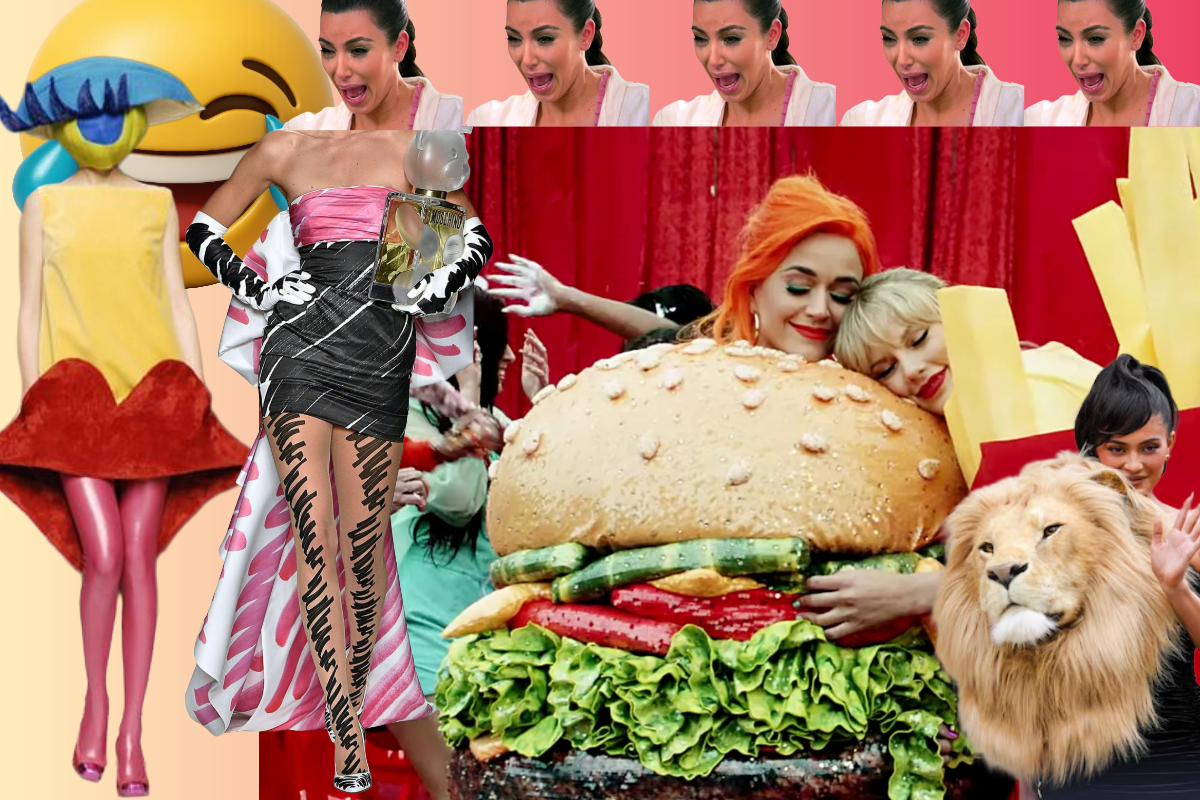How Bad Bunny's Halftime Show Will Defy Fashion Rules & Redefine Mainstream Culture
Chronology of Key Dates
On February 5, 2017, Lady Gaga sang God Bless America and seconds later jumped into a Texan stadium and performed her LGBTQ+ anthem Born This Way in front of a football fan crowd.
On February 2, 2020, Jennifer Lopez took the stage during the Super Bowl Halftime Show in Miami, Florida with Shakira. JLo was wearing a Puerto Rican Flag while singing to a Remix of her hit Let’s Get Loud and Bruce Springsteen’s Born in the USA. Across the stage there were young girls wearing silver shirts with the American flag. Many of them were in what looked like cages —highlighting the divisive immigration policies where kids and babies were being separated from their parents and being kept in cages. Jennifer Lopez sang Born in the USA, flipped her Puerto Rican flag to show an American flag and began to perform Let’s Get Loud.

On October 28, 2024, “Comedian” Tony Hinchcliffe called Puerto Rico “a floating island of garbage” during a rally in Madison Square Garden.
On September 10, 2025, Puerto Rican superstar Bad Bunny spoke with i-D magazine after concluding his series of shows in Puerto Rico and speaking about his plans to tour Europe and Latin America.
“People from the US could come here to see the show. Latinos and Puerto Ricans of the United States could also travel here, or to any part of the world,” he told i-D magazine. “But there was the issue that … ICE could be outside (my concert venue). And it’s something that we were talking about and very concerned about.”
On September 29, 2025, the NFL announced that Bad Bunny would headline the Super Bowl halftime show on February 8, 2026 in California. “After careful consideration with my team, I have decided to do one night only in the USA”. Bad Bunny posted in Spanish.
The NFL has developed some strategies to attract an international fan base, because from a business perspective, money is rarely discriminated against. Their international series has gone everywhere from Brazil, Mexico and Ireland, to Germany and Australia. American sports are being uplifted to international levels, so the entertainment is expected to be internationally known.
In an industry often constrained by rigid expectations of masculinity and language barriers, Bad Bunny has emerged as a transformative force, challenging gender norms through fashion while elevating Spanish-language music to unprecedented heights on international stages. Bad Bunny has become no stranger to American talk shows, the Coachella festival, and award shows that historically have catered to music in English almost exclusively.
Fashion Statements

In the early 2020s we saw a rise of trends challenging gender norms and blending the binary “established” gender norms. Bad Bunny's approach to fashion is neither accidental nor superficial. By appearing on red carpets and award shows in skirts, painted nails, and traditionally feminine silhouettes, he challenges the machismo deeply embedded in both Latin American culture and the global music industry. Bad Bunny is not the first man to challenge this status quo within Latin American culture. After Ricky Martin came out as gay in 2011, he began wearing leather skirts and long boots in some of his shows.

Christian Chávez, a member of the former successful group RBD had been pushing the boundaries even further wearing lace, latex, corsets and even a hot pink mariachi ensemble. But it seems as though the response from the audience to men pursuing gender-fluid fashion depends on whether the man is part of the LGBTQ+ community or not. Ricky Martin and Christian Chavez were quickly condemned for challenging the status quo of machismo through gender-fluid fashion, while figures like Harry Styles and Bad Bunny have quickly been championed for these endeavors.
But Bad Bunny’s fashion is intentional. His storytelling through the clothes brings social issues to worldwide attention. During his 2020 performance on The Tonight Show, he wore a shirt reading "Mataron a Alexa, no a un hombre con falda" ("They killed Alexa, not a man in a skirt")—Bad Bunny murdered transgender woman in Puerto Rico—demonstrated how he uses fashion as activism.
This fashion sartorial rebellion carries particular weight in reggaetón —a genre historically criticized for hypermasculinity and misogyny. Where previous generations of Latin male artists largely conformed to conventional presentations of masculinity.

Bad Bunny's gender-fluid fashion choices signal a generational evolution. He wears Jacquemus skirts and crop tops not as costume but as authentic self-expression, modeling a version of masculinity that embraces vulnerability and rejects limiting binaries.
One of his most viral fashion moments rubber stamping his status as a fashion icon arrived during the 2023 Met Gala. That year’s theme was honoring the fashion legacy of Karl Lagerfeld. Bad Bunny wore a 26 foot long floral train and a white suit by Jacquemus.

Breaking the Language Barrier

Perhaps equally revolutionary is Bad Bunny's refusal to compromise his linguistic identity for mainstream acceptance. During his SNL monologue, he delivered a few lines in Spanish being grateful to Latin American fans and speaking about how that accomplishment was not just his, but the effort of the Latin American community as a whole. You didn’t understand what I said? You have four months to practice! Bad Bunny said hinting no future efforts to sing in English.
In an American music industry that has historically demanded English-language crossover for true stardom, he has achieved unprecedented success while singing almost exclusively in Spanish. His albums have topped the Billboard 200, and his tours have broken attendance records at major American venues—all without conforming to the implicit expectation that Latin artists must abandon their language to achieve legitimacy. Historically, the music industry has segregated Latin music, going as far as doing an entirely separate award ceremony for these artists (Latin Grammys, Latin American Music Awards).
We can’t attribute the success of Latin music in worldwide charts exclusively to Bad Bunny, since Latin artists including but not limited to Ricky Martin, Shakira, Pitbull, Enrique Iglesias and Daddy Yankee worked hard and paved the way for Latin music to enter American charts.
Bad Bunny's dominance on American charts and award shows validates Spanish as a language of global pop culture, not a niche market.
Bad Bunny's music draws deeply from Puerto Rican and Caribbean musical traditions—incorporating salsa, merengue, bachata, and dembow alongside contemporary trap and reggaetón. By placing these tropical rhythms at the center of performances on stages like the American Music Awards, the MTV Video Music Awards, and Coachella, he has recontextualized what "mainstream" music can sound like.
His collaborations span genres and cultures, yet he consistently centers Latin rhythms rather than diluting them for broader palatability. This approach has opened doors for a new generation of Latin artists who no longer feel pressured to anglicize their sound or aesthetic to achieve international recognition.
Legacy in Progress
High fashion, streetwear, gender-fluid fashion statements, hair pieces, makeup art and tropical styles. An artist in the 2020s is so much more than an individual who sings songs that people want to sing: an artist is a set of values that people resonate with, almost as a brand that they want to continue to consume. An artist is someone they admire, they can rely on as inspiration for Halloween costumes, vision boards and Pinterest feeds. Bad Bunny’s headline performance in the Super Bowl will set him as a Latin artist who continues to fight against language barriers, and bring his unique point of view in fashion to a global stage that only a few handpicked selected artists have had the privilege to perform on.







.png)